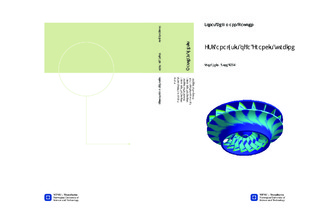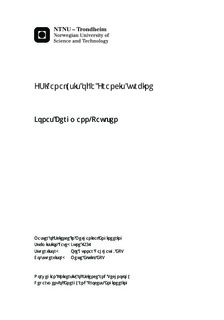| dc.contributor.advisor | Dahlhaug, Ole Gunnar | nb_NO |
| dc.contributor.advisor | Eltvik, Mette | nb_NO |
| dc.contributor.author | Bergmann-Paulsen, Jonas | nb_NO |
| dc.date.accessioned | 2014-12-19T11:49:21Z | |
| dc.date.available | 2014-12-19T11:49:21Z | |
| dc.date.created | 2012-11-08 | nb_NO |
| dc.date.issued | 2012 | nb_NO |
| dc.identifier | 566458 | nb_NO |
| dc.identifier | ntnudaim:8198 | nb_NO |
| dc.identifier.uri | http://hdl.handle.net/11250/234865 | |
| dc.description.abstract | Sediment erosion in Francis turbines is a big problem in hydropower plants in and around the Himalayas. The sediment composition in the rivers contains high levels of the hard mineral quarts. When the sediments enter the turbine they cause erosive damage to exposed parts such as covers, guide vanes and runner. The sediment concentration is at its highest during the monsoon period. During this period some turbines are stopped when the sediment consentration reaches certain levels to reduce the damage. Jhimruk power plant in the mid-western part of Nepal is a good example of how the sediment erosion affects the operation of a power plant. During the monsoon period the turbines can be eroded to an almost unrepairable state. The turbines have to go through substantial annually maintenance. A result of this is reduced power output and high maintenance costs. It is therefore of interest to design a new Francis turbine that can better withstand the sediment erosion. A cooperation project between Kathmandu University and The Norwegian University of Science and Technology was started as a part of the RenewableNepal project which aims to develop and start manufacturing of erosion resistant Francis turbines.A parameter study of different blade designs have been performed to find a more erosion resistant design. In this thesis FSI analyses have been performed on three different designs to verify their structural integrity. The designs transfers the hydraulic energy from the water to the blade in different sections. The results showed a stress distribution which coincided with the energy transfer along the blade. The reference design was analyzed with two different blade thickness. For all the designs the stress was relatively low compared to the criteria for hydraulic turbines. | nb_NO |
| dc.language | eng | nb_NO |
| dc.publisher | Institutt for energi- og prosessteknikk | nb_NO |
| dc.subject | ntnudaim:8198 | no_NO |
| dc.subject | MTPROD produktutvikling og produksjon | no_NO |
| dc.subject | Energi-, prosess- og strømningsteknikk | no_NO |
| dc.title | FSI-analysis of a Francis turbine | nb_NO |
| dc.type | Master thesis | nb_NO |
| dc.source.pagenumber | 83 | nb_NO |
| dc.contributor.department | Norges teknisk-naturvitenskapelige universitet, Fakultet for ingeniørvitenskap og teknologi, Institutt for energi- og prosessteknikk | nb_NO |

